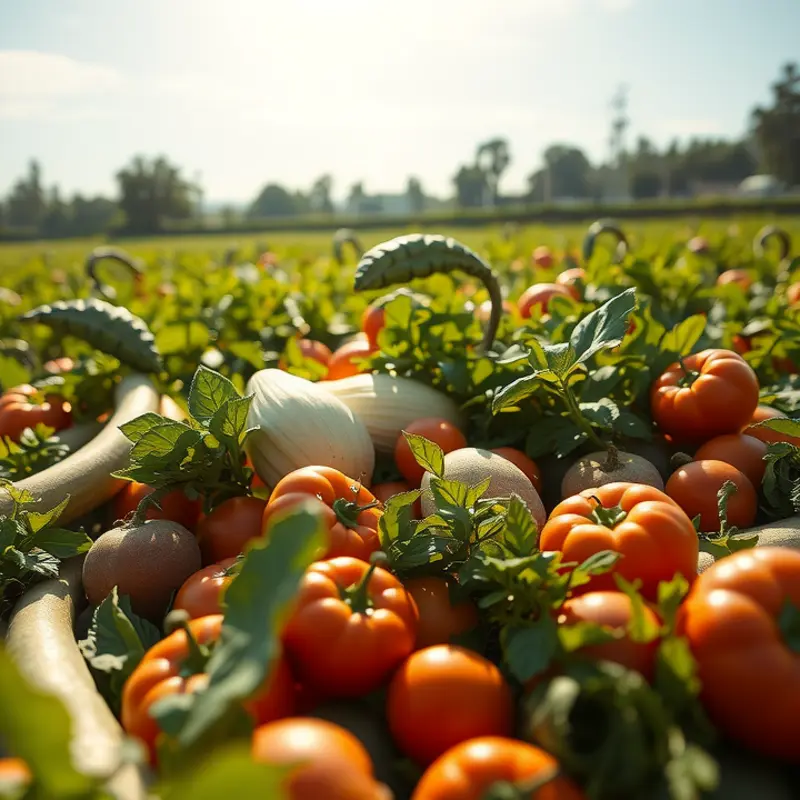Proper food storage is essential for maintaining freshness, flavor, and reducing waste. One key element often overlooked is humidity control. High humidity can promote mold growth and spoilage, while low humidity can dry out food and lead to loss of flavor. This guide will provide actionable tips to help you control humidity levels in your food storage areas, ensuring your food stays fresh longer and remains safe to eat.
Understanding Humidity and Its Impact on Food

Humidity is a critical factor in food storage that can accelerate spoilage if not controlled effectively. It plays a significant role in how food maintains texture, flavor, and nutritional value over time. Different types of food respond uniquely to varying levels of humidity, making it essential to tailor your storage environment accordingly.
High humidity levels can expedite the growth of mold and bacteria, particularly on fresh produce and bread. Fruit and vegetables tend to lose their crispness and may rot faster when exposed to excessive moisture. On the other hand, low humidity results in dehydration, causing leafy greens to wilt and hard breads to become stale. A thriving balance is necessary to prolong shelf life and maintain quality.
Meat and dairy products are especially sensitive to humidity. In overly humid conditions, condensation can form on surfaces, offering a breeding ground for microorganisms. This not only compromises safety but also alters flavor and texture. Dry conditions can cause meats to harden, losing juiciness and making them less palatable.
Dried goods like grains, cereals, and spices also demand specific attention. While they thrive in low-humidity environments, exposure to moisture can lead to clumping and spoilage. This is particularly true for powders and flours which can harbor mold in damp environments. Proper sealing and containment are crucial to maintain their longevity.
Managing your kitchen environment requires vigilance. Here are some actionable strategies:
-
Separate Zones: Store foods in spaces optimized for their humidity needs. Utilize crisper drawers for produce, adjusting humidity settings when available.
-
Proper Packaging: Invest in airtight containers or vacuum-sealing methods for sensitive items. This not only protects against humidity fluctuations but also preserves flavor.
-
Cooling and Ventilation: Ensure your refrigerator and pantry are properly ventilated. Good airflow prevents moisture build-up that can spoil food quickly.
-
Regular Monitoring: Use thermometers and humidity meters to regularly check conditions, adjusting as necessary to fit different food categories.
-
Eco-smart Solutions: Adopting eco-smart kitchen storage techniques can aid in managing humidity naturally. Using materials that regulate moisture, like clay or beeswax wraps, can help achieve the balance needed for different food types. For further tips on efficient storage solutions, you can explore this article on eco-smart kitchen storage.
Mastering the art of controlling humidity is integral to minimizing food waste and maximizing freshness. By understanding the delicate relationship between humidity and food, you can optimize your kitchen practices and enjoy your ingredients for longer. Transitioning seamlessly to the next chapter, we’ll delve into more specific storage techniques tailored to various food groups.
Practical Tips for Regulating Humidity in Storage

To maintain the freshness of your perishables, controlling humidity in storage areas is crucial. Different foods require different humidity levels, and optimizing these can significantly extend their shelf life.
Use of Airtight Containers
Storing food in airtight containers helps regulate humidity levels. These containers prevent moisture from entering or leaving, stabilizing the internal environment. This is particularly important for foods sensitive to humidity, like dry grains, herbs, and coffee.
Refrigerator and Freezer Humidity Settings
Refrigerators often come with built-in humidity controls. Utilize these settings to adjust the humidity levels according to the type of food stored. Vegetables require higher humidity to stay crisp and fresh, while fruits benefit from lower humidity to prevent spoilage.
Humidity Control Packs
For precise humidity control, consider using humidity packs. These packs adjust to maintain desired moisture levels, keeping food products in optimal condition. They are especially useful for delicate items like herbs and dried fruits.
Air Circulation
Proper air circulation is essential for maintaining consistent humidity levels. Avoid over-packing your fridge or pantry, allowing air to circulate freely. This ensures that moisture does not accumulate in isolated pockets, reducing the risk of mold and spoilage.
Temperature Regulation
Temperature and humidity are interconnected. Ensure your storage areas maintain stable temperatures. Sudden changes can lead to condensation, which often disrupts humidity balance and accelerates food spoilage.
Regular Maintenance
Regularly check seals on your refrigerator and storage containers. Leaks can introduce unwanted moisture, increasing humidity levels and potentially causing food to spoil faster. Keeping seals tight ensures the environment remains stable.
Location and Insulation
Position food storage in well-insulated areas away from direct sunlight or heat sources. Heat can increase humidity levels, leading to premature spoilage. A stable environment helps maintain optimal conditions for storing various foodstuffs.
By implementing these strategies, you can significantly extend the freshness and quality of your perishables. Reducing waste not only benefits your pocket but also contributes to a more sustainable lifestyle. For more ideas on eco-friendly storage solutions, explore eco-smart kitchen storage tips.
Final words
Effectively managing humidity in your food storage areas is crucial for prolonging freshness, maintaining flavor, and minimizing waste. By understanding how humidity impacts different types of food and employing practical tips for regulating your storage environments, you can improve your food management practices at home. Consider investing in humidity control tools and regularly checking the conditions of your pantry, fridge, and other storage spaces. With these steps, you can enjoy healthier, fresher food while also contributing to waste reduction.







